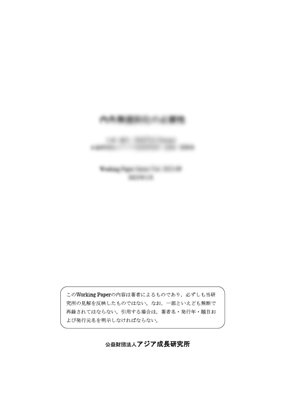Are All Banking Crises Alike?

| 執筆者 | Michael Hutchison, Kathleen McDill |
|---|---|
| 発行年月 | 1999年 7月 |
| No. | 1999-11 |
| ダウンロード | 485KB |
内容紹介
This paper examines episodes of banking sector distress for a large sample of developed and developing countries, highlighting the experience of Japan. By a host of criteria, Japan appeared to be in a stronger position than most countries at the onset of banking problems—low inflation, appreciating currency, balanced government budget, and large external surpluses. However, Japan followed a clear international boom-and-bust pattern in terms of real output growth, credit growth and stock price movements. We estimate a multivariate probit model that links the likelihood of banking problems to a set of macroeconomic variables and institutional characteristics. The model predicts a high probability of banking sector distress in Japan in the early 1990s. In particular, the likelihood of an episode of banking distress rose in line with the sharp drop in asset prices, deepening recession and “moral hazard” problem (financial liberalization combined with explicit deposit insurance). The Japanese case is also noteworthy by the long duration of the banking crisis, the length of the coincident recession and general malaise over the economy, the slow regulatory response, and the long delay in the commitment of public funds to re-capitalize the banking sector.
